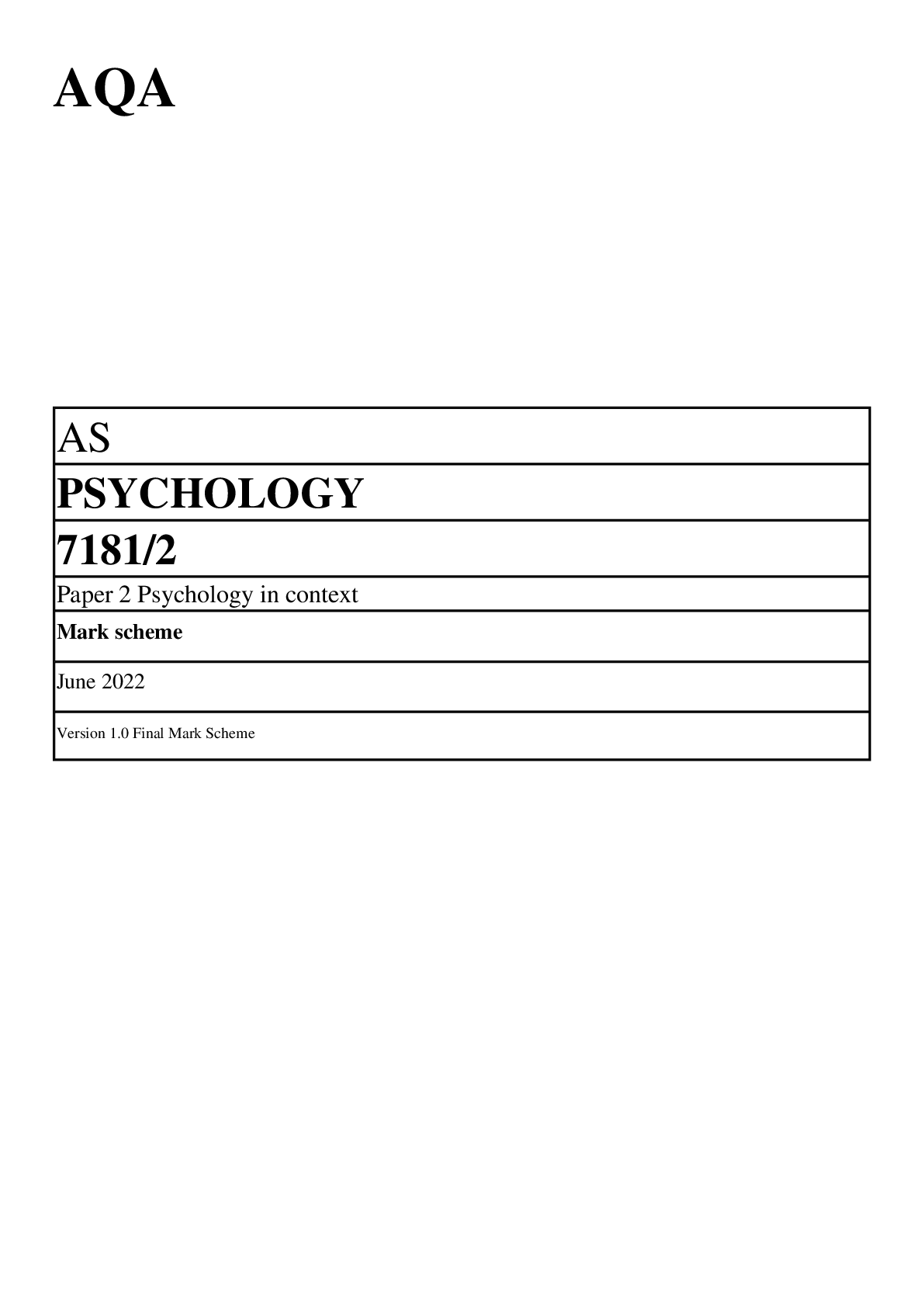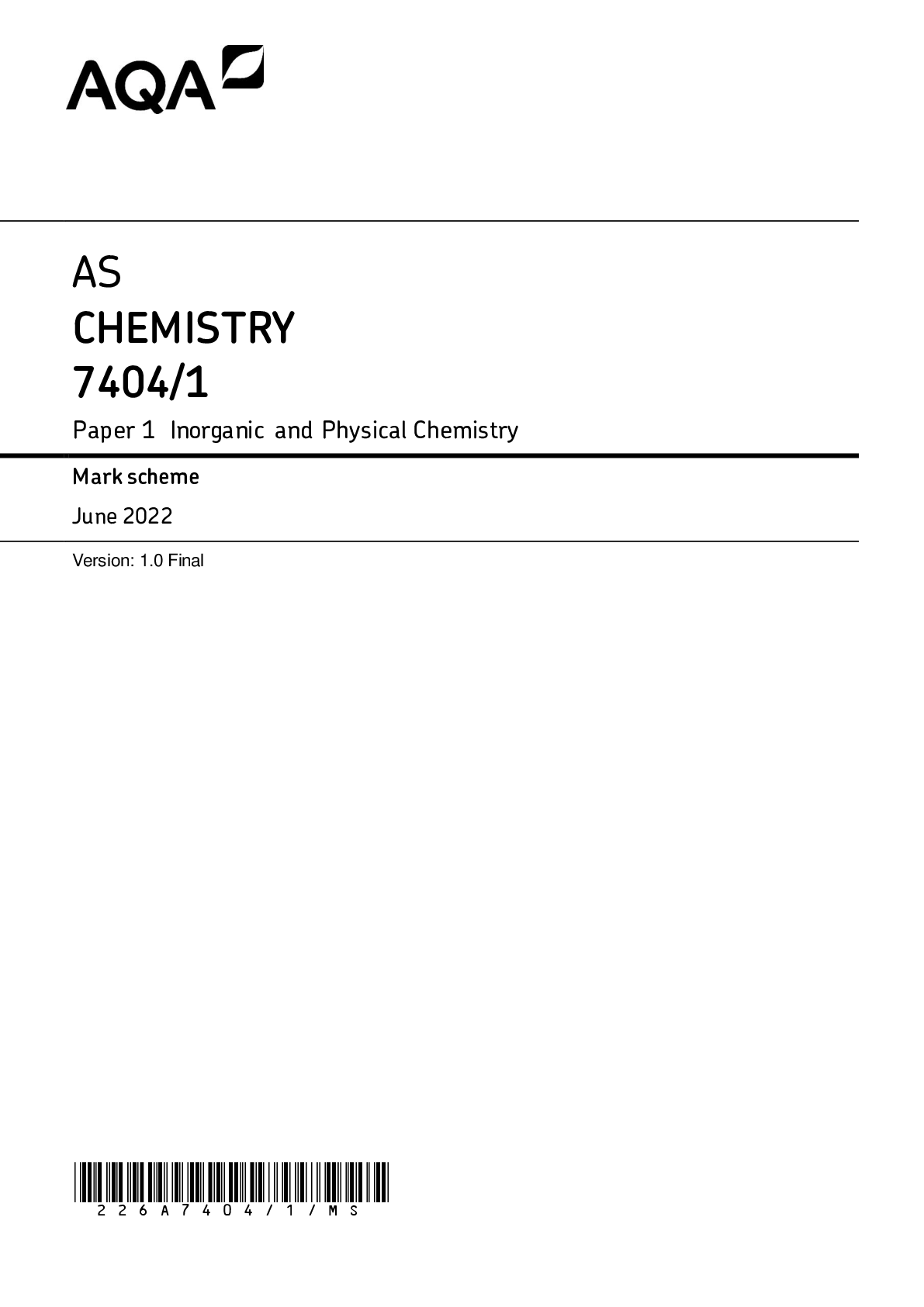Economics > AS Level Mark Scheme > AS ECONOMICS 7135/2 Paper 2 The National Economy in a Global Context Mark scheme June 2022 Version: (All)
AS ECONOMICS 7135/2 Paper 2 The National Economy in a Global Context Mark scheme June 2022 Version: 1.0 Final Mark Scheme *226A7135/2/MS* MARK SCHEME – AS ECONOMICS – 7135/2 – JUNE 2022 2
Document Content and Description Below
AS ECONOMICS 7135/2 Paper 2 The National Economy in a Global Context Mark scheme June 2022 Version: 1.0 Final Mark Scheme *226A7135/2/MS* MARK SCHEME – AS ECONOMICS – 7135/2 – JUNE 2022 ... 2 Mark schemes are prepared by the Lead Assessment Writer and considered, together with the relevant questions, by a panel of subject teachers. This mark scheme includes any amendments made at the standardisation events which all associates participate in and is the scheme which was used by them in this examination. The standardisation process ensures that the mark scheme covers the students’ responses to questions and that every associate understands and applies it in the same correct way. As preparation for standardisation each associate analyses a number of students’ scripts. Alternative answers not already covered by the mark scheme are discussed and legislated for. If, after the standardisation process, associates encounter unusual answers which have not been raised they are required to refer these to the Lead Examiner. It must be stressed that a mark scheme is a working document, in many cases further developed and expanded on the basis of students’ reactions to a particular paper. Assumptions about future mark schemes on the basis of one year’s document should be avoided; whilst the guiding principles of assessment remain constant, details will change, depending on the content of a particular examination paper. Further copies of this mark scheme are available from aqa.org.uk Copyright information AQA retains the copyright on all its publications. However, registered schools/colleges for AQA are permitted to copy material from this booklet for their own internal use, with the following important exception: AQA cannot give permission to schools/colleges to photocopy any material that is acknowledged to a third party even for internal use within the centre. Copyright © 2022 AQA and its licensors. All rights reserved. MARK SCHEME – AS ECONOMICS – 7135/2 – JUNE 2022 3 SECTION A The following list indicates the correct answers used in marking the students’ responses. KEY LIST 1 D (An increase in productive potential) 11 D (spending) 2 B (Faster economic growth abroad and lower world commodity prices) 12 B (income tax rates are reduced) 3 A (allow easier comparison of data) 13 C 4 C (structural unemployment) 14 B (budget surplus) 5 A (Falling, Falling, Rising) 15 B (£1455bn) 6 D (reduce aggregate demand) 16 D (stimulate supply-side improvements) 7 C (rose faster in Country X between 2017 and 2019) 17 C (Expansionary fiscal policy and a stronger exchange rate) 8 D (real incomes may have risen or fallen) 18 B (job vacancies) 9 A (Decrease, Decrease, Increase) 19 D (unemployment) 10 C (the action of the accelerator) 20 A (exchange rate) Totals A 4 B 5 C 5 D 6 MARK SCHEME – AS ECONOMICS – 7135/2 – JUNE 2022 4 Level of response marking instructions Level of response mark schemes are broken down into levels, each of which has a descriptor. The descriptor for the level shows the average performance for the level. There are marks in each level. Before you apply the mark scheme to a student’s answer read through the answer and annotate it (as instructed) to show the qualities that are being looked for. You can then apply the mark scheme. Step 1 Determine a level Start at the lowest level of the mark scheme and use it as a ladder to see whether the answer meets the descriptor for that level. The descriptor for the level indicates the different qualities that might be seen in the student’s answer for that level. If it meets the lowest level then go to the next one and decide if it meets this level, and so on, until you have a match between the level descriptor and the answer. With practice and familiarity you will find that for better answers you will be able to quickly skip through the lower levels of the mark scheme. When assigning a level you should look at the overall quality of the answer and not look to pick holes in small and specific parts of the answer where the student has not performed quite as well as the rest. If the answer covers different aspects of different levels of the mark scheme you should use a best fit approach for defining the level and then use the variability of the response to help decide the mark within the level, ie if the response is predominantly level 3 with a small amount of level 4 material it would be placed in level 3 but be awarded a mark near the top of the level because of the level 4 content. Step 2 Determine a mark Once you have assigned a level you need to decide on the mark. The descriptors on how to allocate marks can help with this. The exemplar materials used during standardisation will help. There will be an answer in the standardising materials which will correspond with each level of the mark scheme. This answer will have been awarded a mark by the Lead Examiner. You can compare the student’s answer with the example to determine if it is the same standard, better or worse than the example. You can then use this to allocate a mark for the answer based on the Lead Examiner’s mark on the example. You may well need to read back through the answer as you apply the mark scheme to clarify points and assure yourself that the level and the mark are appropriate. Indicative content in the mark scheme is provided as a guide for examiners. It is not intended to be exhaustive and you must credit other valid points. Students do not have to cover all of the points mentioned in the Indicative content to reach the highest level of the mark scheme. An answer which contains nothing of relevance to the question must be awarded no marks. MARK SCHEME – AS ECONOMICS – 7135/2 – JUNE 2022 5 The levels of response grid below should be used when marking the 25 mark questions. Level of response Response Max 25 marks 5 Sound, focused analysis and well-supported evaluation that: • is well organised, showing sound knowledge and understanding of economic terminology, concepts and principles with few, if any, errors • includes good application of relevant economic principles to the given context and, where appropriate, good use of data to support the response • includes well-focused analysis with clear, logical chains of reasoning • includes supported evaluation throughout the response and in a final conclusion. 21–25 marks 4 Sound, focused analysis and some supported evaluation that: • is well organised, showing sound knowledge and understanding of economic terminology, concepts and principles with few, if any, errors • includes some good application of relevant economic principles to the given context and, where appropriate, some good use of data to support the response • includes some well-focused analysis with clear, logical chains of reasoning • includes some reasonable, supported evaluation. 16–20 marks 3 Some reasonable analysis but generally unsupported evaluation that: • focuses on issues that are relevant to the question, showing satisfactory knowledge and understanding of economic terminology, concepts and principles but some weaknesses may be present • includes reasonable application of relevant economic principles to the given context and, where appropriate, some use of data to support the response • includes some reasonable analysis but which might not be adequately developed or becomes confused in places • includes fairly superficial evaluation; there is likely to be some attempt to make relevant judgements but these are not well-supported by arguments and/or data. 11–15 marks 2 A fairly weak response with some understanding that: • includes some limited knowledge and understanding of economic terminology, concepts and principles but some errors are likely • includes some limited, application of relevant economic principles to the given context and/or data to the question • includes some limited analysis but it may lack focus and/or become confused • includes attempted evaluation which is weak and unsupported. 6–10 marks 1 A very weak response that: • includes little relevant knowledge and understanding of economic terminology, concepts and principles • includes application to the given context which, at best, is very weak • includes attempted analysis which is weak and unsupported. 1–5 marks MARK SCHEME – AS ECONOMICS – 7135/2 – JUNE 2022 6 Section B Context 1 ECONOMIC GROWTH Total for this context: 50 marks 2 1 Define ‘price stability’ Extract B (line 3). [3 marks] Level of response Response Max 3 marks 3 • A full and precise definition is given. 3 marks 2 • The substantive content of the definition is correct, but there may be some imprecision or inaccuracy. 2 marks 1 • Some fragmented points are made. 1 mark Examples of acceptable definitions worth 3 marks: • controlling inflation to achieve a low rate of inflation in line with the government’s target of 2% • when the general level of prices is consistently rising slowly • allow a definition of absolute price stability, eg achieving a zero annual rate of inflation. Examples of a definition worth 2 marks: • when inflation is rising slowly (no indication of a period of time to emphasise ‘stability’) • when the general level of prices is rising slowly (as above). Examples of a definition worth 1 mark: • no inflation • a general sustained increase in the price level (definition of inflation, with no indication that the increase is low or slow). MAXIMUM FOR QUESTION 21: 3 MARKS MARK SCHEME – AS ECONOMICS – 7135/2 – JUNE 2022 7 2 2 If UK GDP was equal to £2073 billion in 2017, use Extract A to calculate, to the nearest billion, the value of UK GDP in 2018. [4 marks] Calculation: £2073 bn x 1.014 = £2102.02 bn = £2102 bn to the nearest billion Response Max 4 marks For the correct answer: £2102 billion 4 marks For an answer not rounded to the nearest billion: eg £2102.02 billion OR For the correct answer without units £ or billion: eg 2102 billion or £2102 3 marks For the correct answer without units £ and billion: 2102 OR For an answer not rounded to the nearest billion and without £ units: eg 2102.02 billion OR For an answer not rounded to the nearest billion and without billion units: eg £2102.02 2 marks For identifying the correct method for the calculation: eg 2073 x 1.014 OR For an answer not rounded to the nearest billion and without units £ and billion: eg 2102.02 1 mark MAXIMUM FOR QUESTION 22: 4 MARKS MARK SCHEME – AS ECONOMICS – 7135/2 – JUNE 2022 8 2 3 Use Extract A to identify two significant points of comparison between the growth rates of the UK and Germany over the period shown. [4 marks] Award up to 2 marks for each significant point of comparison made. Response Max 4 marks Identifies a significant point of comparison. Makes accurate use of the data to support the point identified. Unit of measurement given accurately. 2 marks Identifies a significant point of comparison but only one piece of data is given when two are needed and/or no unit of measurement is given and/or the unit of measurement is inaccurate. OR Identifies a significant feature of one data series with accurate use of the data (including the unit of measurement) but no comparison is made. 1 mark If a student identifies more than 2 significant points of comparison, reward the best two. Significant points include: • the annual % change in real GDP in both countries was higher at the start of the period in 2015 than in 2019. In the UK annual % change in real GDP was 2.4% in 2015, and 1.4% in 2019, whereas in Germany it was 1.7% in 2015 and 0.6% in 2019 • the annual % change in real GDP was higher in the UK than in Germany at the start and end of the period. In the UK annual % change in real GDP was 2.4% in 2015, whereas in Germany it was 1.7%, in 2019, the annual % change in real GDP was 1.4% in the UK, and 0.6% in Germany • only between the years 2016 to 2018 was the German growth rate higher than the UK. In 2016, the annual % change in real GDP was 1.9% in the UK, and 2.2% in Germany; In 2018, the annual % change in real GDP was 1.4% in the UK, and 1.5% in Germany • the highest annual % change in real GDP in the UK occurred in 2015 at 2.4%, whereas in Germany it occurred in 2017 at 2.5% • the lowest annual % change in real GDP occurred in 2018 and 2019 in the UK at 1.4%, and in 2019 in Germany at 0.6% • the annual % change in real GDP in Germany had a greater range than in the UK, with a range of 1.9 % points, for Germany, and a smaller range of 1% point. MAXIMUM FOR QUESTION 23: 4 MARKS MARK SCHEME – AS ECONOMICS – 7135/2 – JUNE 2022 9 2 4 Extract C (lines 16–17) states: ‘An increase in the funds available for education and training should help to improve factor mobility’. Draw an AD/AS diagram to show the long-run impact of improved factor mobility on the price level and national income. [4 marks] The correct diagram involves an AD/AS diagram illustrating a shift to the right of the LRAS curve. It is not necessary to include the SRAS curve. The use of the Keynesian model is acceptable and should be rewarded. Response Max 4 marks Accurately drawn AD/AS diagram showing the initial equilibrium level of output and price level, a rightwards shift in the LRAS curve, an increase in real national output, and a lower equilibrium price level with both axes and all curves and coordinates correctly labelled. 4 marks Accurately drawn AD/AS diagram showing the initial equilibrium level of output and price level, a rightwards shift in the LRAS curve, an increase in real national output, and a lower equilibrium price level, with one [Show More]
Last updated: 1 year ago
Preview 1 out of 17 pages

Reviews( 0 )
Document information
Connected school, study & course
About the document
Uploaded On
Apr 01, 2023
Number of pages
17
Written in
Additional information
This document has been written for:
Uploaded
Apr 01, 2023
Downloads
0
Views
80


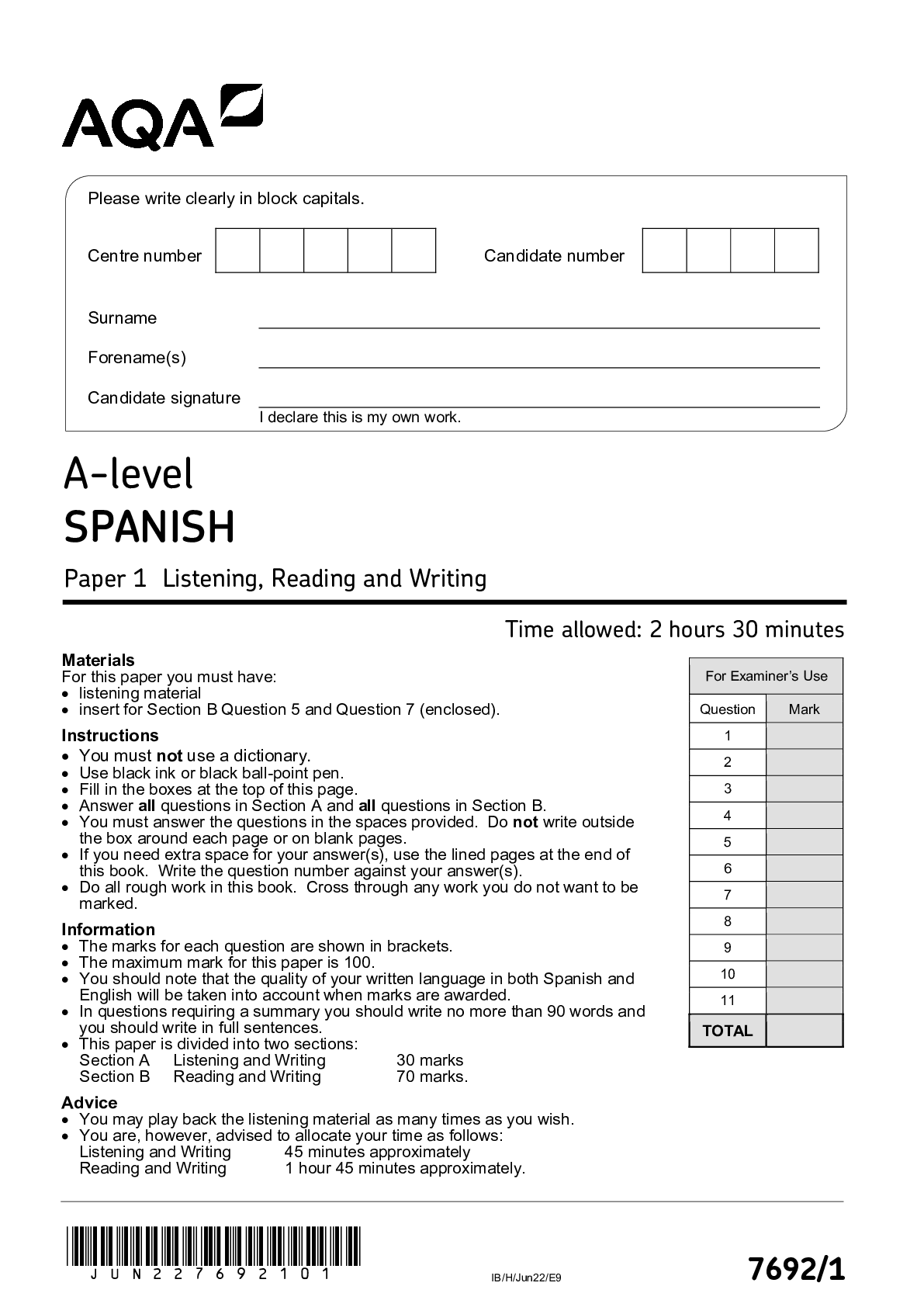
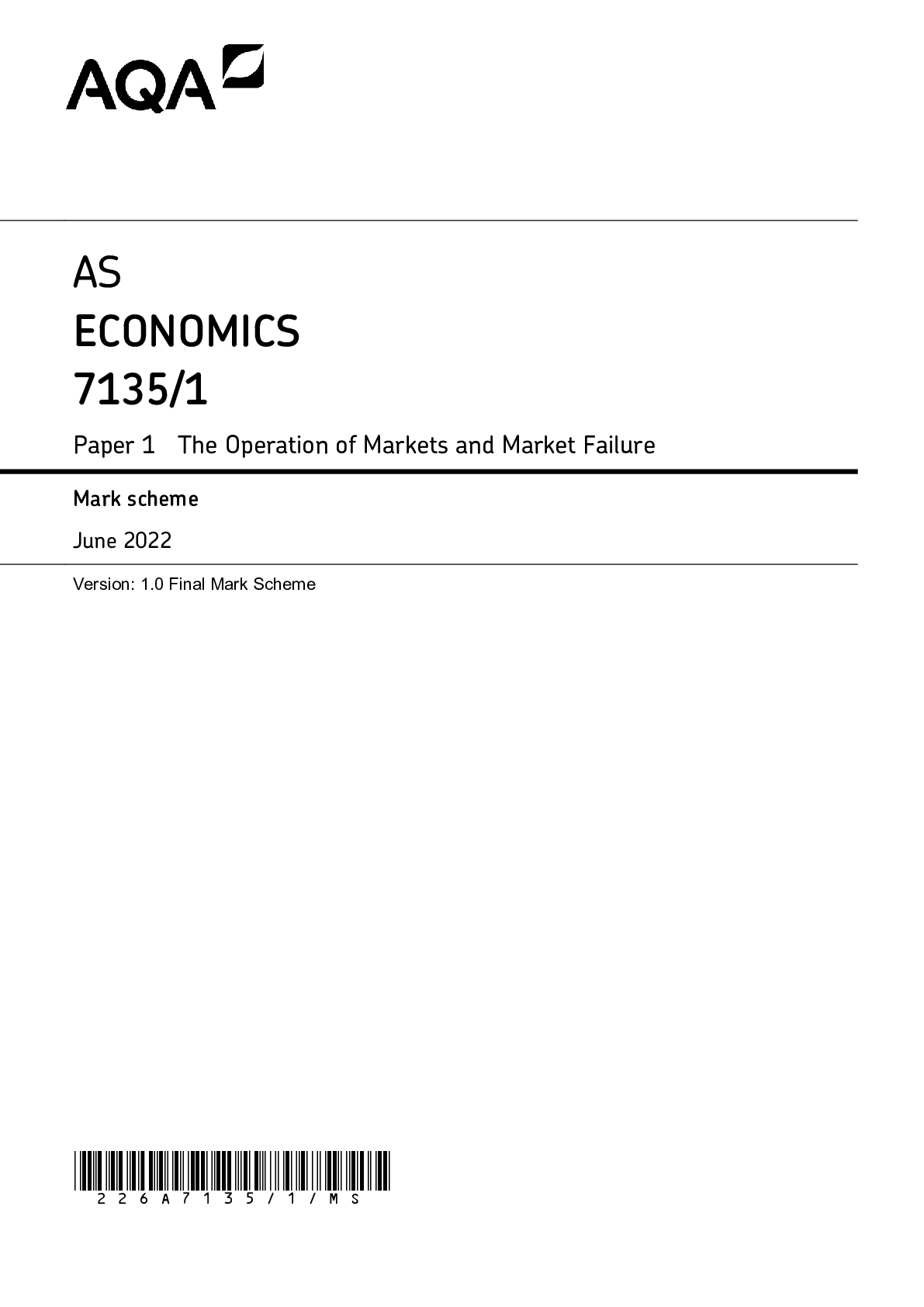
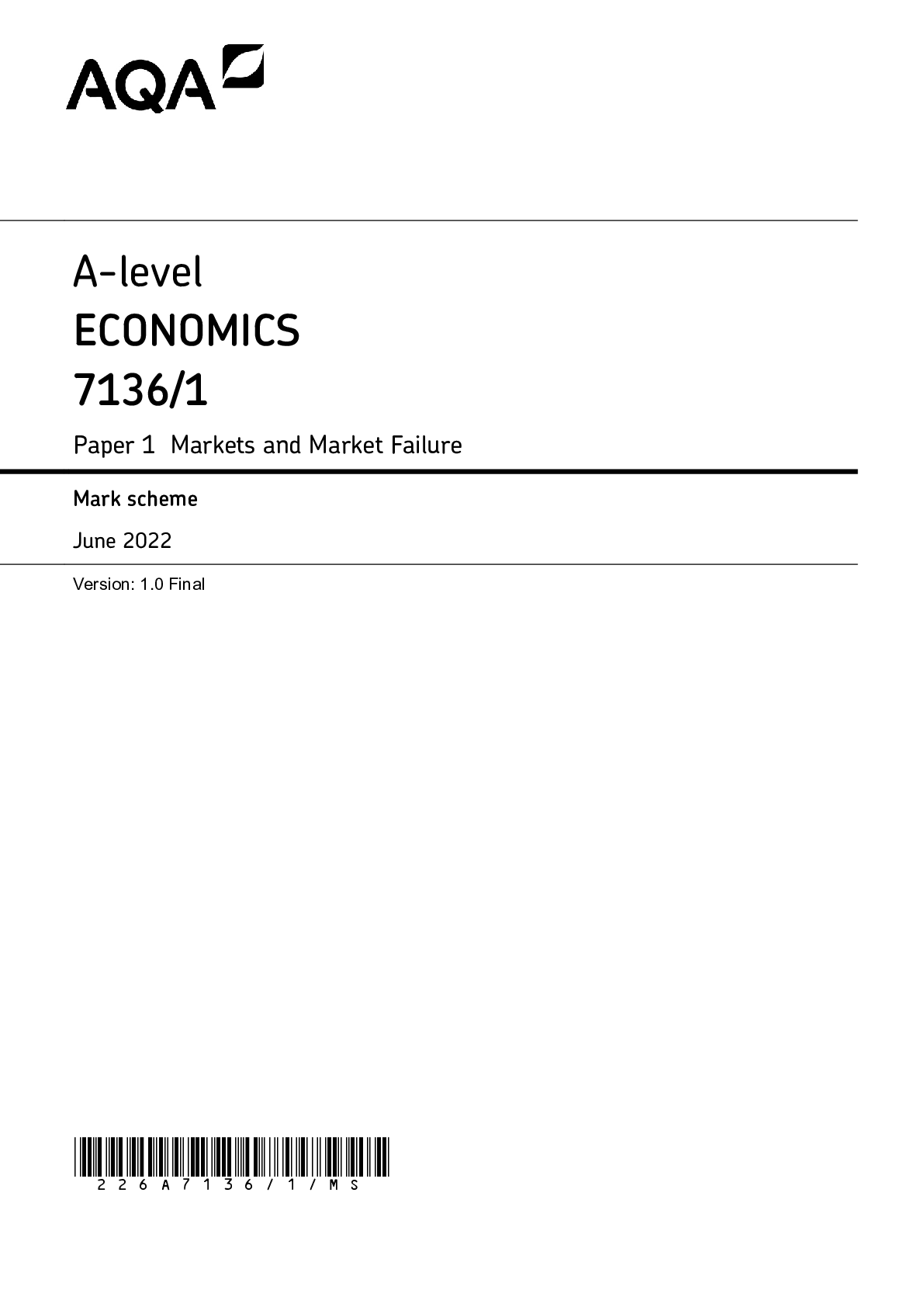

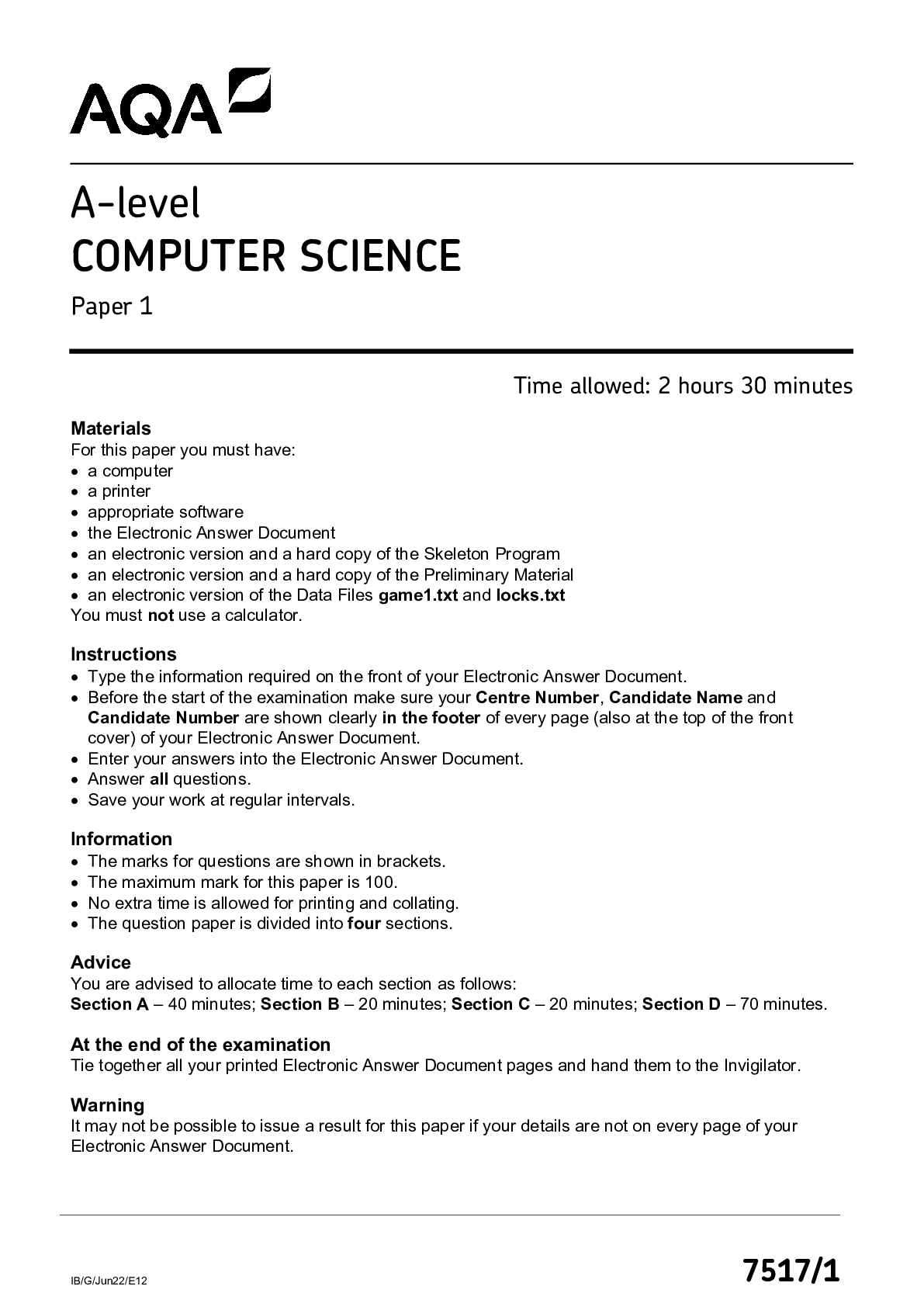
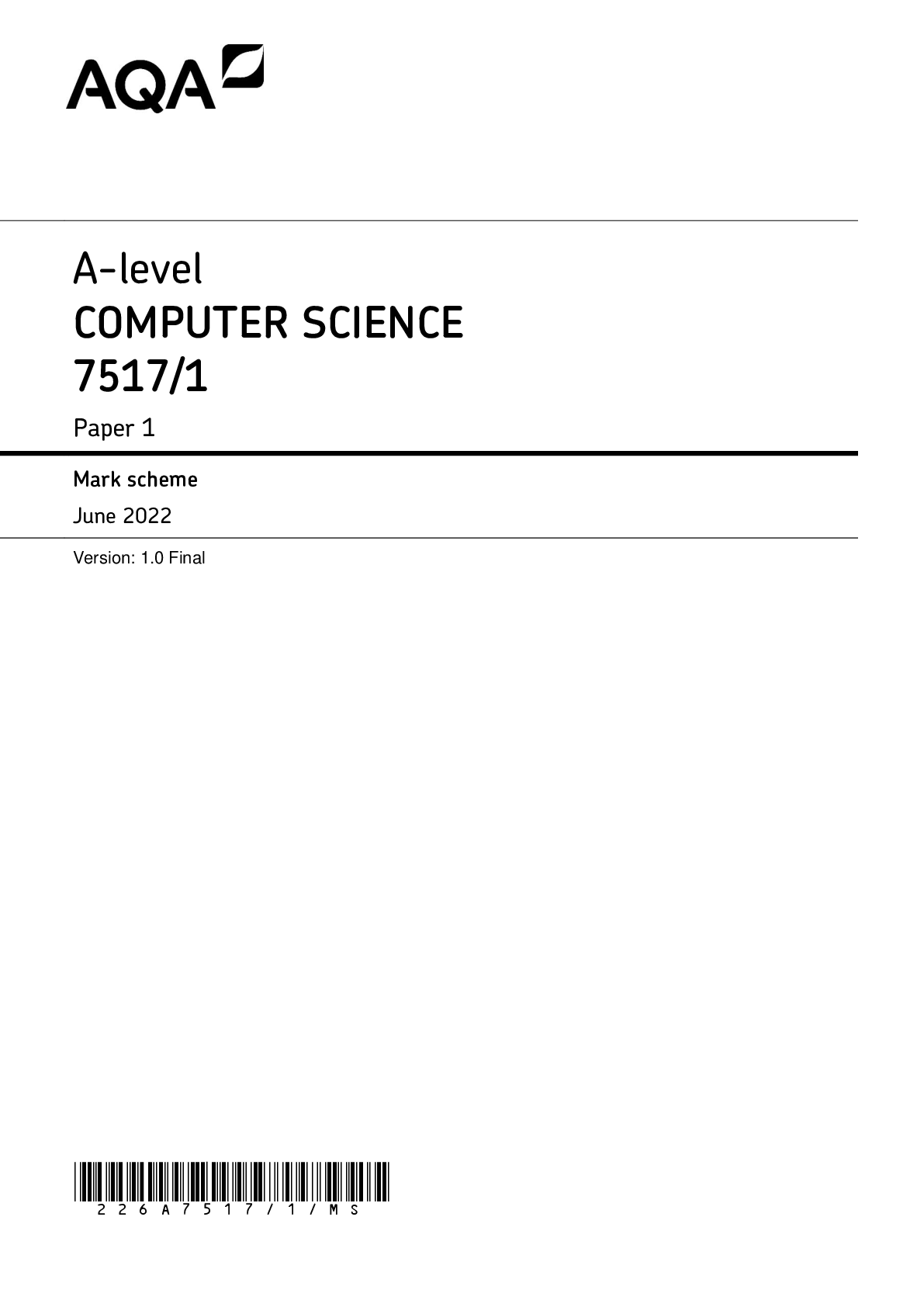

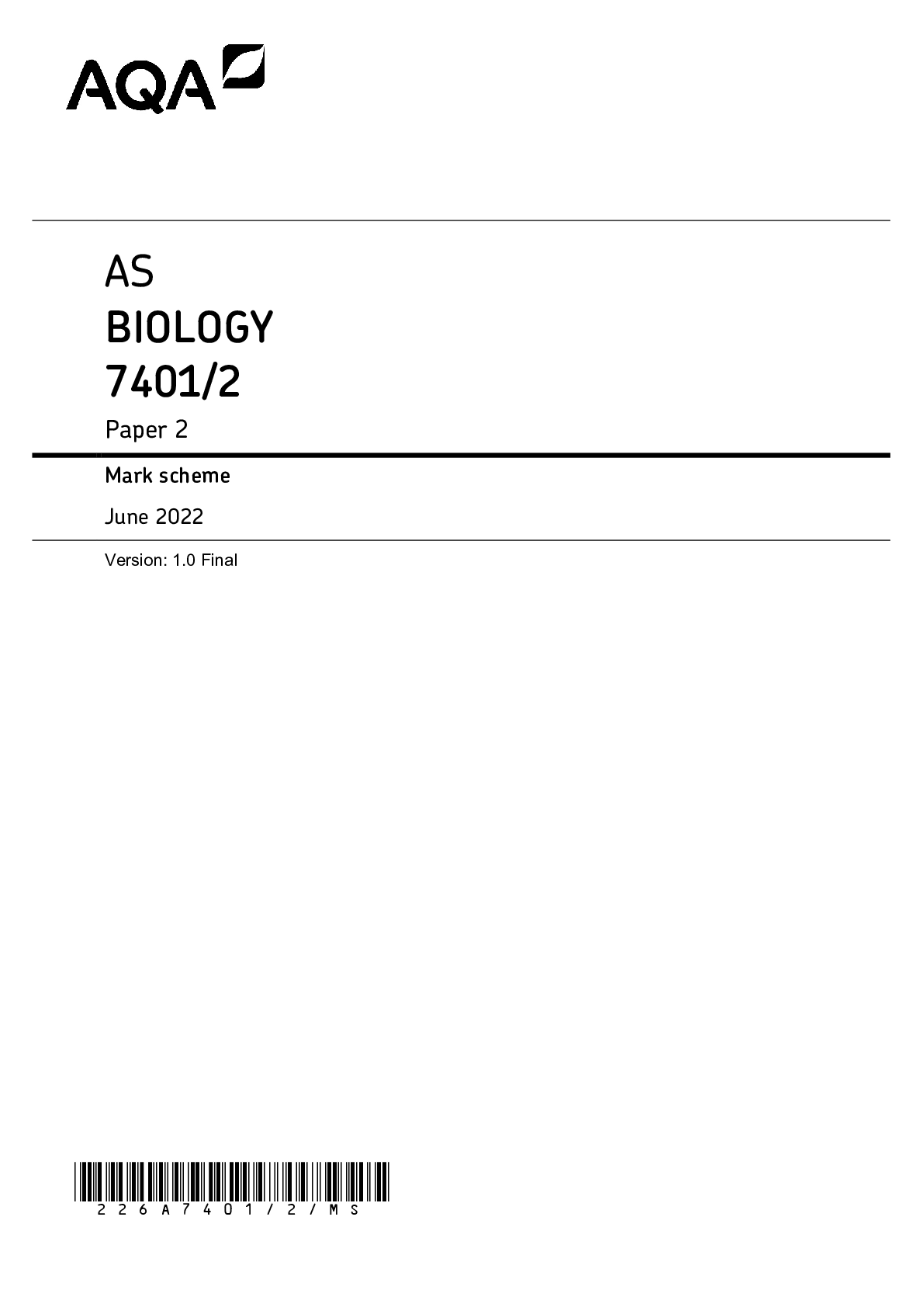
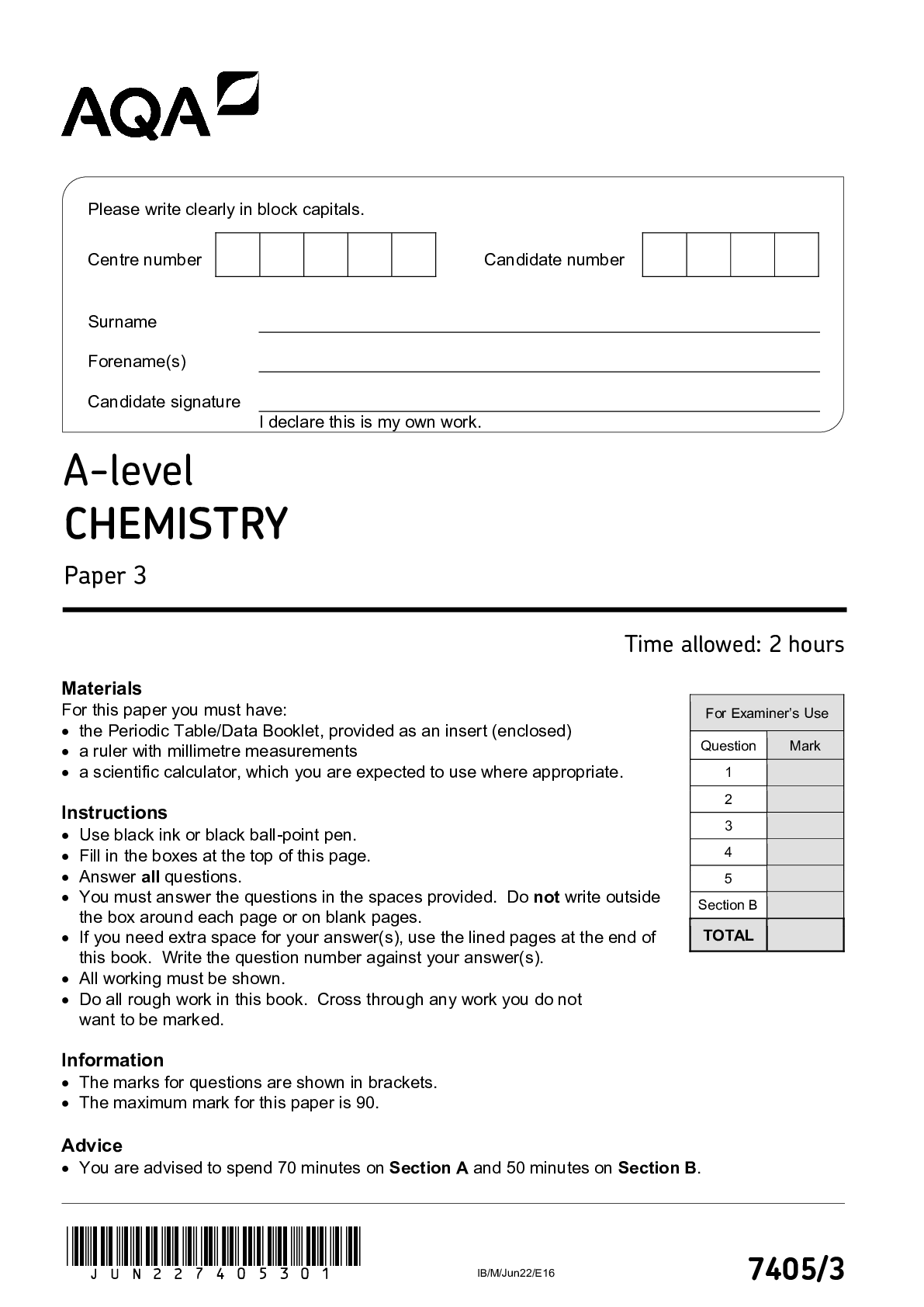

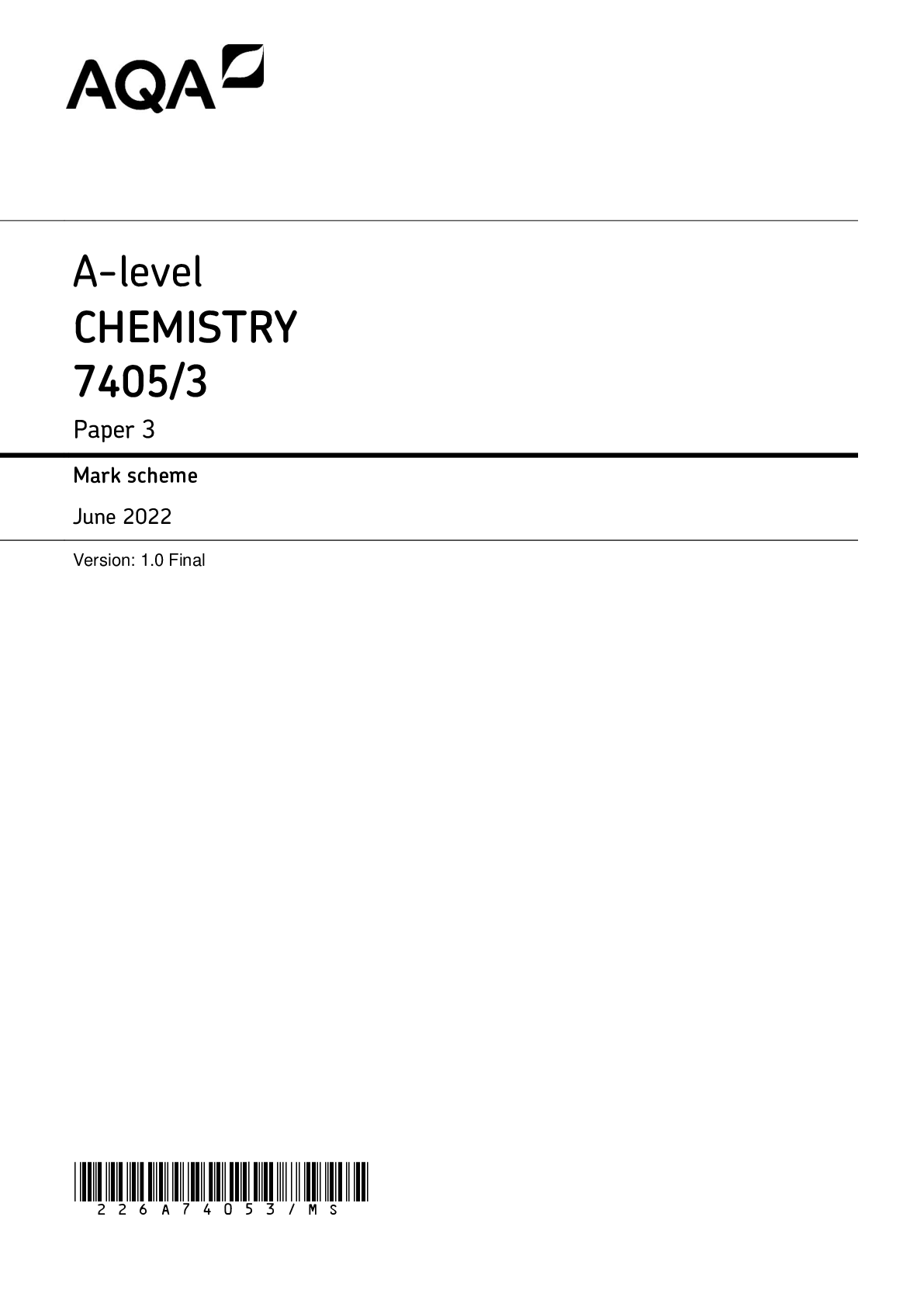
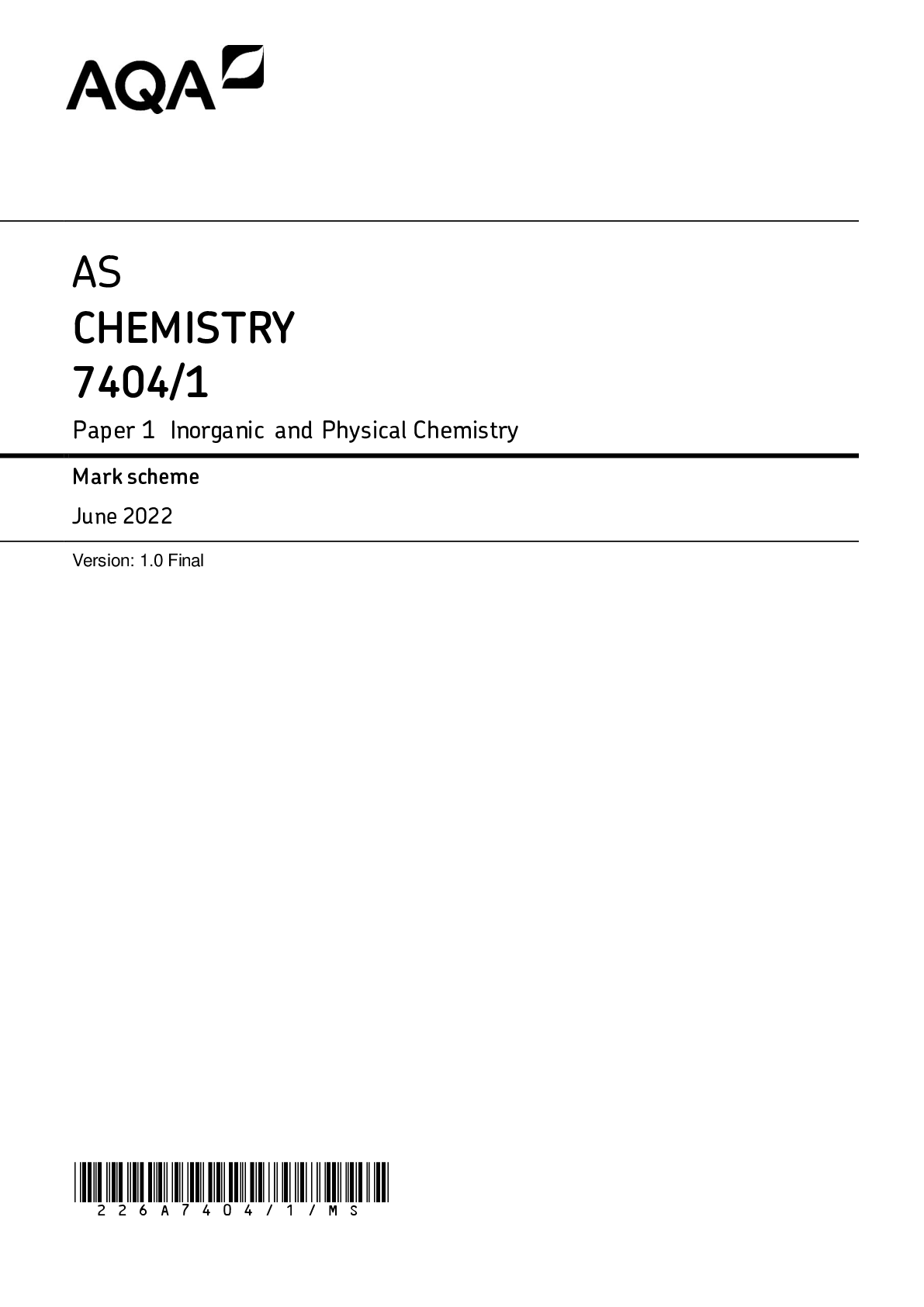
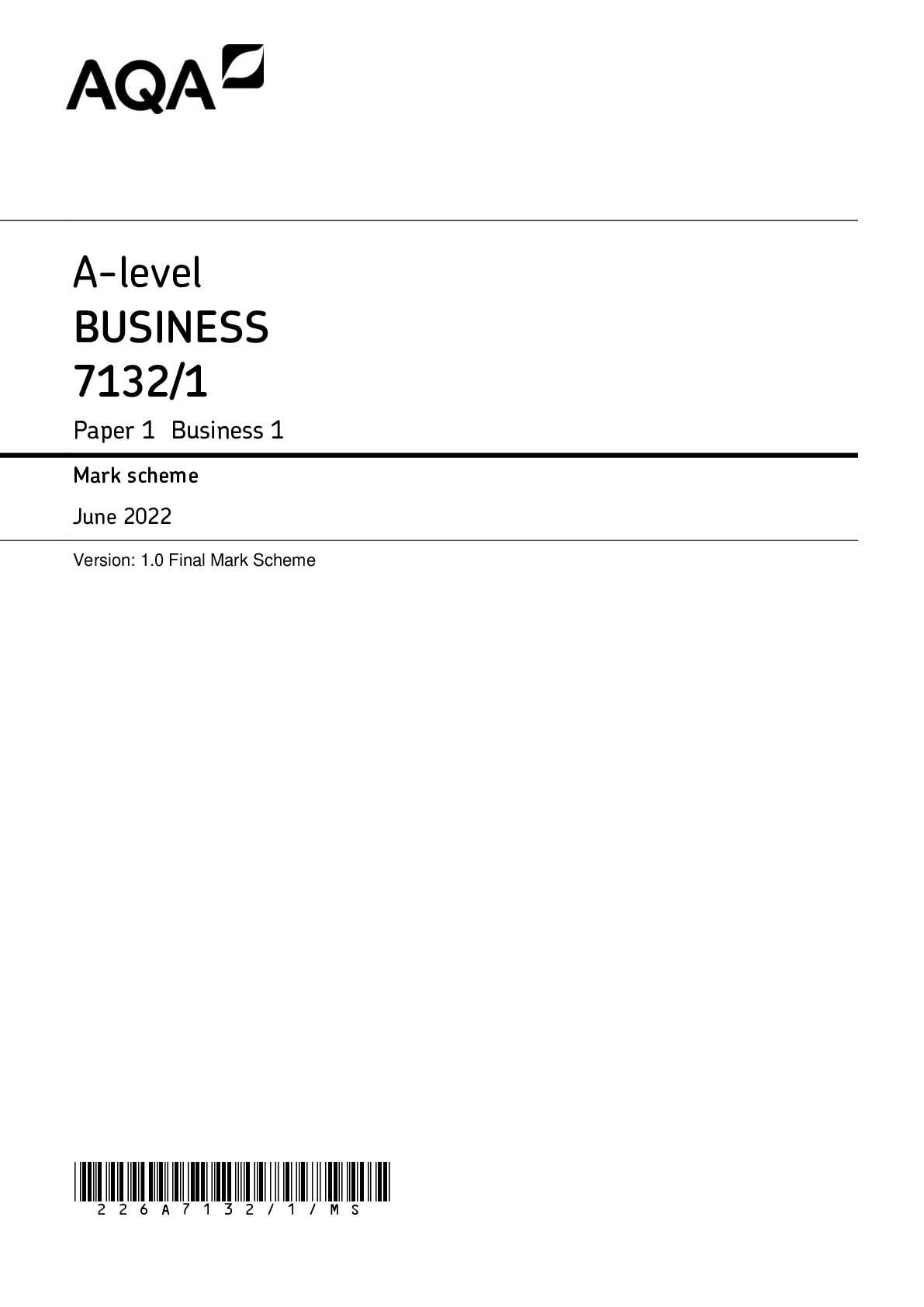
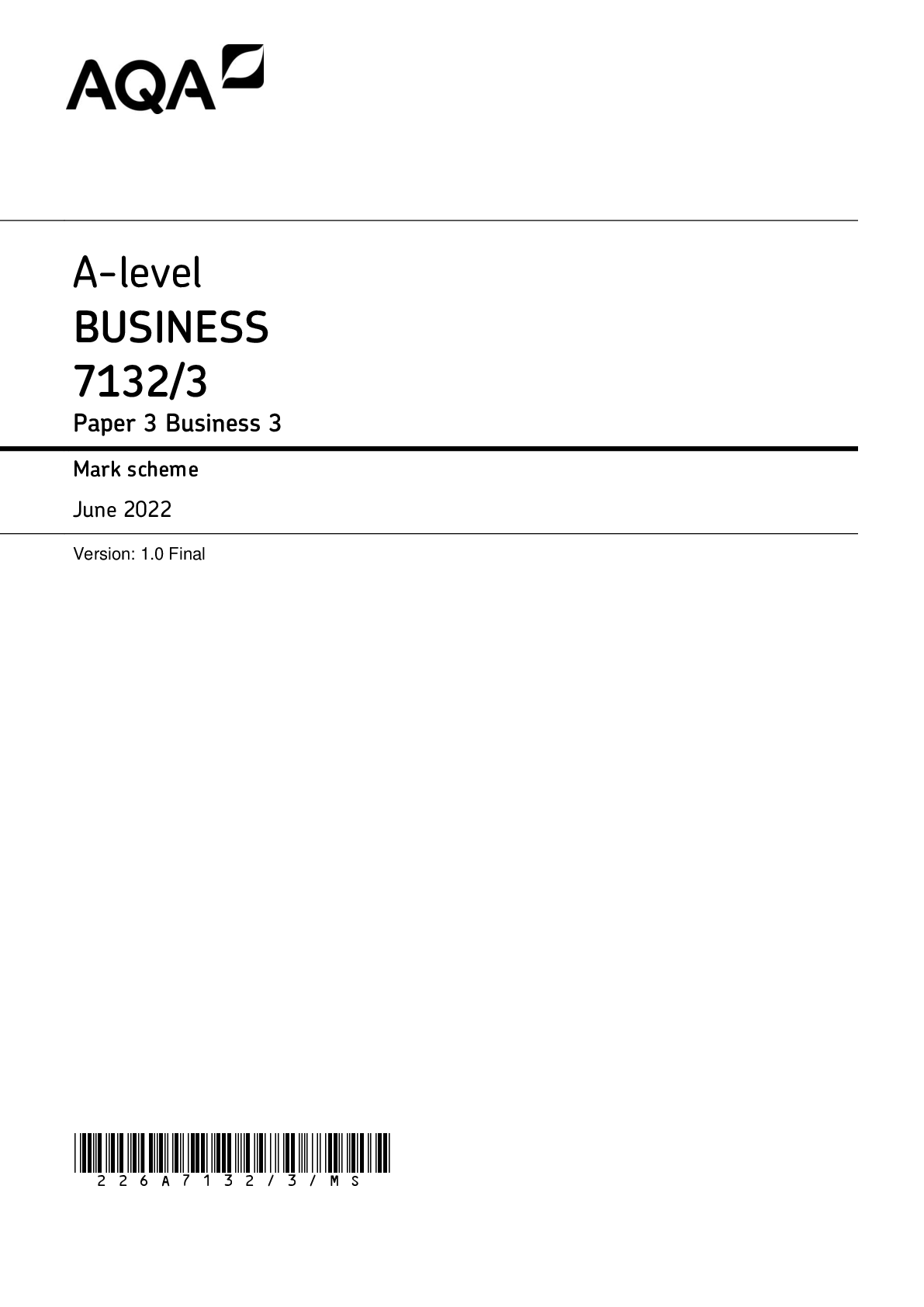
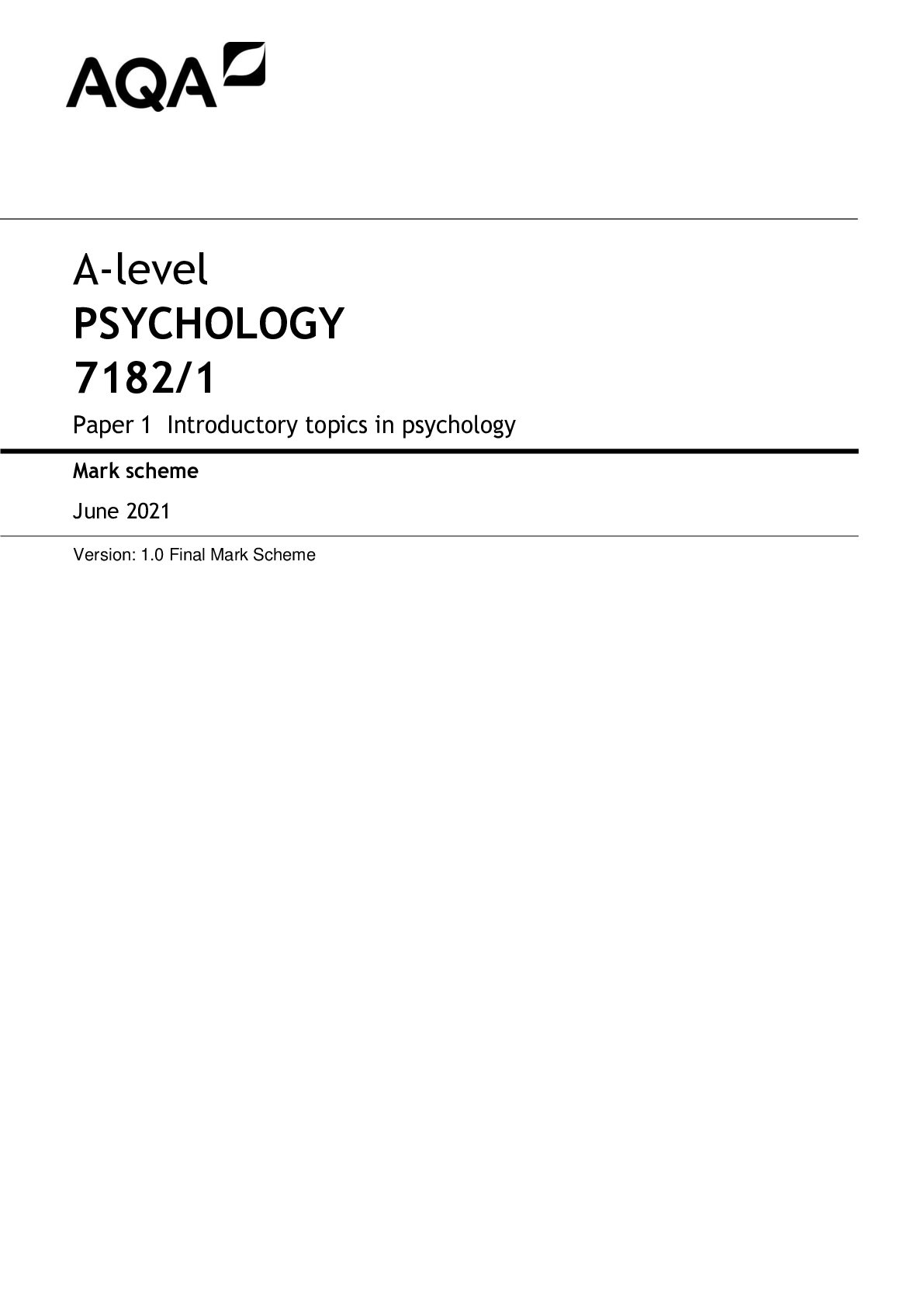
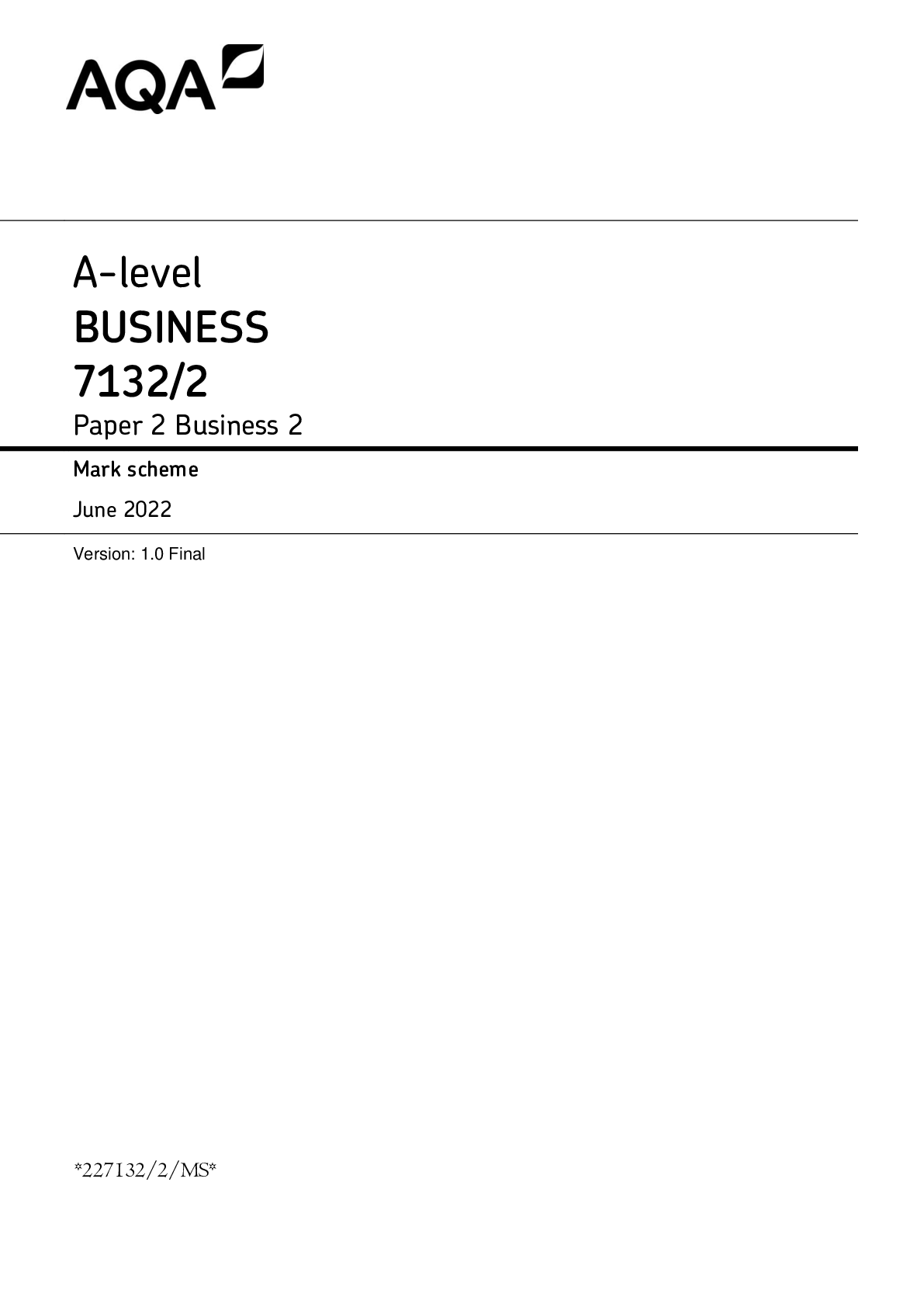


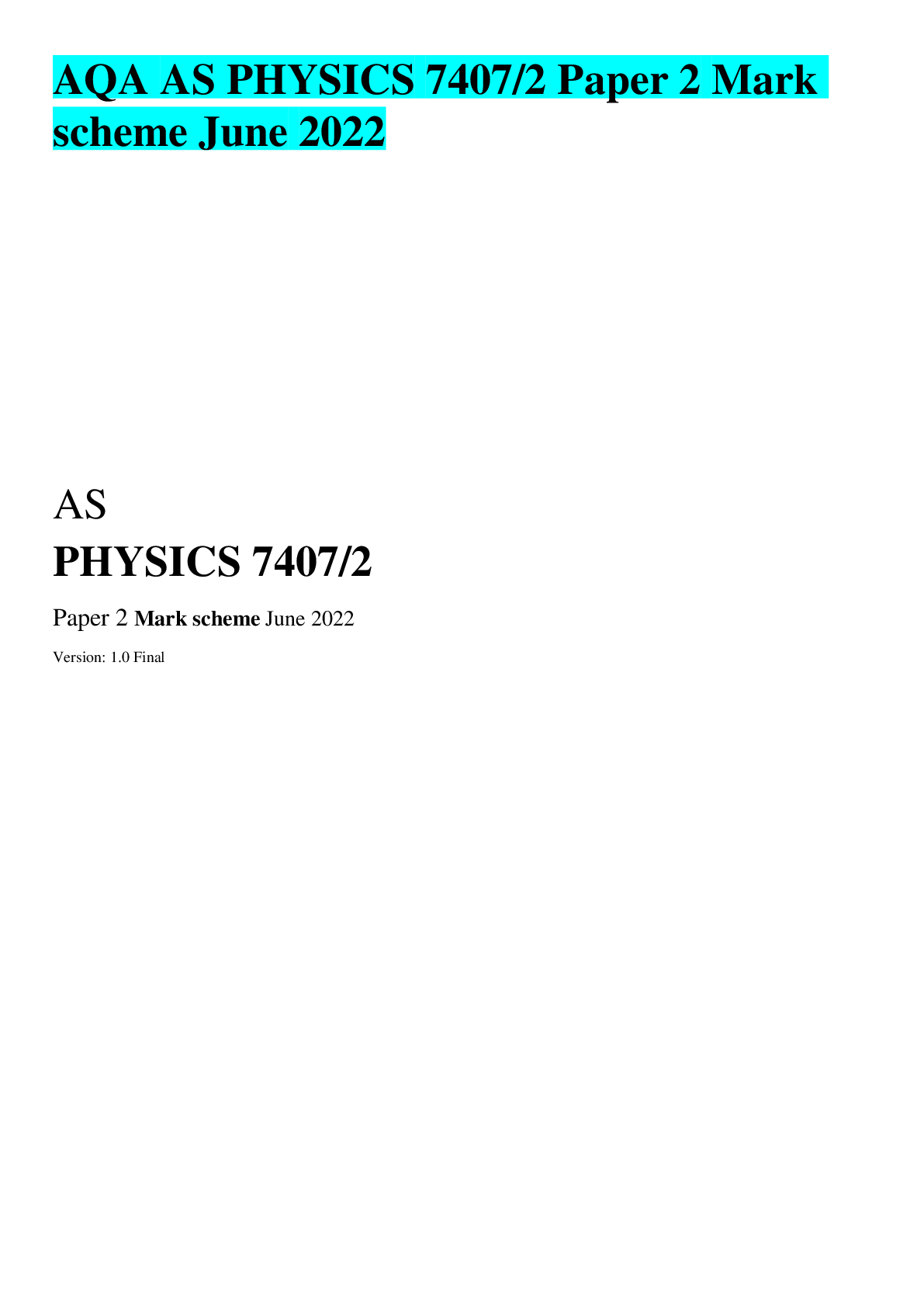
.png)
